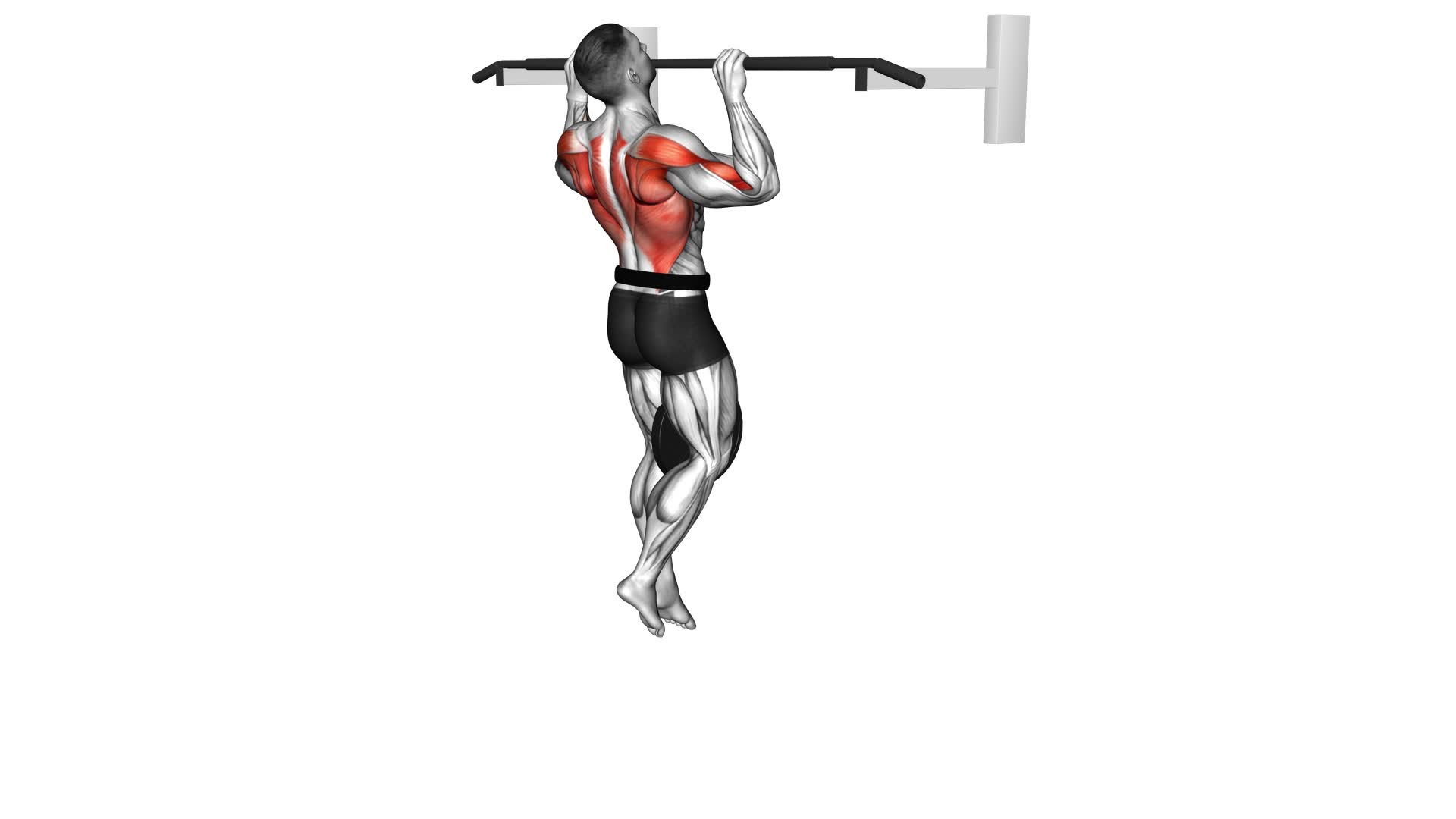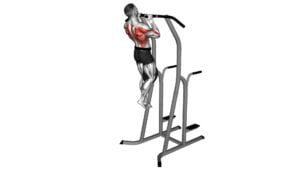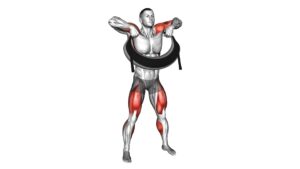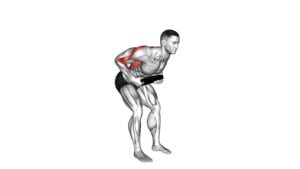Weighted Pull-up – Video Exercise Guide & Tips

Looking to take your pull-up game to the next level?
Watch This Exercise Video
In this video exercise guide, we'll show you everything you need to know about weighted pull-ups.
With the right equipment and proper form, you can strengthen your upper body and increase your muscle definition.
We'll also share tips on how to progressively increase the weight and avoid common mistakes.
Get ready to maximize your results with this challenging yet rewarding exercise.
Let's dive in!
Key Takeaways
- Weighted pull-ups enhance upper body strength and increase muscle mass.
- Proper form and technique, including elbow and back positioning, are crucial for maximizing results.
- Gradually increasing the weight and monitoring progress helps to continue making gains and minimize the risk of injury.
- Consistency, dedication, and incorporating variations are key for achieving fitness goals with weighted pull-ups.
Benefits of Weighted Pull-ups
By performing weighted pull-ups, you can enhance your upper body strength and increase muscle mass. This exercise targets multiple muscle groups, including the back, biceps, and shoulders, helping you build a strong and well-rounded physique.
One of the main benefits of weighted pull-ups is that they allow you to continually progress and challenge yourself. As you become stronger, you can gradually increase the amount of weight you use, pushing your muscles to adapt and grow. This progressive overload stimulates muscle hypertrophy and helps you achieve your muscle-building goals.
Additionally, weighted pull-ups improve grip strength, which is essential for various activities such as rock climbing or carrying heavy objects. Moreover, this exercise engages your core muscles, promoting stability and balance.
To progress in weighted pull-ups, start by using a weight that challenges you but still allows you to perform the exercise with proper form. Gradually increase the weight as you become more comfortable and proficient. Remember to always warm up and stretch before attempting weighted pull-ups to prevent injury.
Now that you understand the benefits of weighted pull-ups, let's move on to the equipment needed for this exercise.
Equipment Needed for Weighted Pull-ups
To perform weighted pull-ups, you'll need some specific equipment. The main piece of equipment required is a weight belt or a dip belt, which allows you to attach weight plates to your body.
Alternatively, you can also use a weight vest or a backpack to add resistance. These equipment options provide different ways to increase the intensity of your pull-up workout.
Required Equipment for Weighted Pull-Ups
You will need a weighted vest or belt for your weighted pull-ups. These pieces of equipment allow you to add extra weight to your body, challenging your muscles and increasing the difficulty of the exercise.
A weighted vest is a vest that has pockets to hold weight plates, which can be adjusted to add or remove weight as needed. This provides a comfortable and secure way to add resistance to your pull-ups.
Alternatively, you can use a weight belt, which is a belt with a chain or strap to attach weight plates. This allows you to hang the weight plates from your waist, providing a similar effect as a weighted vest.
Both the weighted vest and weight belt are essential equipment for anyone looking to incorporate weighted pull-ups into their workout routine.
Alternatives to Weighted Pull-Ups
If you don't have access to a weighted vest or belt, there are alternative options for adding resistance to your pull-ups. One option is to use resistance bands. Loop the band around the bar and place your feet or knees in the loop, providing resistance as you pull yourself up.
Another alternative is to use a dumbbell or kettlebell. Hold the weight between your feet or legs while performing the pull-up, adding extra resistance to the movement.
Additionally, you can try doing negative pull-ups, where you focus on the lowering phase of the movement. Start at the top of the bar and slowly lower yourself down, resisting gravity as much as possible.
These variations of pull-up exercises can help you continue challenging your muscles and making progress, even without access to weighted equipment.
Proper Form and Technique for Weighted Pull-ups
To perform weighted pull-ups with proper form and technique, it's important to focus on two key points: elbow and back positioning, and breathing and core engagement.
When performing the exercise, make sure to keep your elbows tucked in and your back straight to maximize engagement of the targeted muscles.
Additionally, remember to breathe properly and engage your core muscles throughout the movement to maintain stability and control.
Elbows and Back Positioning
Maintain proper form and technique for weighted pull-ups by focusing on your elbow and back positioning.
To ensure correct elbow positioning, follow these tips:
- Keep your elbows close to your body throughout the movement.
- Avoid flaring your elbows out to the sides, as this can put unnecessary strain on your shoulders.
- Aim to maintain a 90-degree angle at your elbows throughout the exercise.
In addition to proper elbow positioning, it's crucial to engage your back muscles effectively. Try these techniques to maximize back engagement:
- Squeeze your shoulder blades together as you pull yourself up.
- Focus on pulling with your back muscles rather than just your arms.
- Imagine pulling your elbows down towards your hips to activate your lats.
Breathing and Core Engagement
You need to focus on your breathing and engage your core properly to maintain proper form and technique for weighted pull-ups.
Proper breathing techniques during the exercise can help you generate more power and stability. As you pull yourself up, exhale slowly and forcefully through your mouth. This helps to engage your core muscles and stabilize your torso. Inhale deeply through your nose as you lower yourself back down to the starting position.
Engaging your core is crucial for maintaining proper form. Imagine pulling your belly button towards your spine and tightening your abdominal muscles. This will provide a solid base of support and prevent any unnecessary swinging or arching of the back.
How to Progressively Increase the Weight
To progressively increase the weight during weighted pull-ups, gradually add additional weight to your body using a weight belt or vest. This method allows for progressive overload, which is essential for continued strength gains and muscle growth.
Here are three ways to effectively increment the weight during your pull-up training:
- Start with a manageable weight: Begin by adding a small amount of weight, such as 5-10 pounds, to your body. This will help you adapt to the added resistance without compromising your form.
- Gradually increase the weight: Once you're comfortable with the initial weight, gradually increase the load by adding an additional 2-5 pounds. This incremental approach ensures that your body gradually adapts to the new challenge, minimizing the risk of injury.
- Monitor your progress: Keep track of the weight you're using for each session. As your strength improves, aim to increase the weight every 2-4 weeks. This consistent progression will help you continue challenging your muscles and making gains over time.
Common Mistakes to Avoid During Weighted Pull-ups
Avoiding proper warm-up is a common mistake when performing weighted pull-ups. It's crucial to warm up your muscles and prepare your body for the intense exercise ahead. Skipping this step can increase the risk of injury and hinder your performance.
Another common mistake is using improper technique. It's important to maintain proper form throughout the exercise to target the correct muscles and avoid unnecessary strain. One common error is swinging your body or using momentum to pull yourself up. This takes away from the effectiveness of the exercise and can lead to muscle imbalances. Instead, focus on using your back muscles to initiate the movement and control the entire range of motion.
Finally, neglecting to gradually increase the weight is another common mistake. It's important to progressively challenge yourself by adding weight gradually over time. This will help you build strength and continue making progress.
By avoiding these common mistakes and following proper technique, you can maximize your results with weighted pull-ups.
Now let's explore some tips to help you achieve even better results.
Tips to Maximize Your Results With Weighted Pull-Ups
To further enhance your performance and achieve optimal results with weighted pull-ups, consider implementing the following tips:
- Gradually increase the weight: Start with a weight that challenges you but still allows you to maintain proper form. As you become stronger, gradually increase the weight to continue challenging your muscles and maximizing upper body strength.
- Focus on proper form: Ensure that you're using the correct technique throughout the exercise. Keep your core engaged, shoulders pulled back, and elbows tucked in. This will help target the muscles in your back, arms, and shoulders more effectively.
- Incorporate variations: To prevent plateaus and keep your workout routine interesting, incorporate different variations of weighted pull-ups. This can include using different grips, such as wide or narrow, or adding pauses at different points during the movement. This will engage different muscle groups and help to continuously challenge your body.
By following these tips, you can maximize your results and effectively incorporate weighted pull-ups into your workout routine.
Remember to listen to your body, rest adequately between sessions, and consult a fitness professional if needed. With consistency and dedication, you'll gradually increase your upper body strength and achieve your fitness goals.
Frequently Asked Questions
What Are the Potential Risks or Injuries Associated With Weighted Pull-Ups?
When it comes to weighted pull-ups, it's important to be aware of the potential risks and injuries involved. Adding weight to this exercise puts extra strain on your muscles and joints, increasing the risk of strains, sprains, or even more serious injuries like tendonitis or muscle tears.
It's crucial to use proper form and gradually increase the weight to avoid overloading your body. Always listen to your body and stop if you experience any pain or discomfort during weighted pull-ups.
Can Weighted Pull-Ups Help Me Build Muscle Mass?
Weighted pull-ups can be a great way for you to build muscle mass and increase strength. By adding extra weight to your pull-ups, you're challenging your muscles even more, which can lead to greater gains in muscle size and strength.
This exercise targets your back, shoulders, and arms, helping you develop a well-rounded upper body. Incorporating weighted pull-ups into your workout routine can be an effective strategy for building muscle and increasing overall strength.
How Often Should I Incorporate Weighted Pull-Ups Into My Workout Routine?
To get the benefits of incorporating weighted pull-ups into your workout routine, you need to know how often to do them. So, how often should you incorporate weighted pull-ups into your routine?
It's recommended to do them 2-3 times a week, with a day of rest in between. This allows your muscles to recover and grow stronger.
Are There Any Alternative Exercises That Target the Same Muscle Groups as Weighted Pull-Ups?
If you're looking for alternative exercises that target the same muscle groups as weighted pull-ups, there are a few options you can try.
One option is the lat pulldown, which is a great exercise for working the same muscles.
Another option is the bent-over row, which targets the back muscles as well.
Additionally, you can try assisted pull-ups or band pull-aparts to target the same muscle groups.
These exercises can be a good alternative if you don't have access to the equipment needed for weighted pull-ups.
Can Weighted Pull-Ups Help Improve My Overall Strength and Athletic Performance?
Weighted pull-ups can greatly improve your overall strength and athletic performance. By adding weight to your pull-ups, you challenge your muscles even more than with regular pull-ups. This leads to increased muscle growth and strength in your back, arms, and shoulders.
Additionally, weighted pull-ups can help you develop a stronger grip, which is essential for many athletic activities.
Incorporating weighted pull-ups into your training routine will undoubtedly take your strength and performance to the next level.
Conclusion
In conclusion, weighted pull-ups are an effective exercise for building upper body strength and improving overall fitness. By gradually increasing the weight and maintaining proper form, you can maximize the benefits of this exercise.
Avoid common mistakes and follow the tips provided to achieve optimal results. Incorporating weighted pull-ups into your workout routine can help you reach your fitness goals and enhance your overall strength and endurance.

Author
Years ago, the spark of my life’s passion ignited in my mind the moment I stepped into the local gym for the first time. The inaugural bead of perspiration, the initial endeavor, the very first surge of endorphins, and a sense of pride that washed over me post-workout marked the beginning of my deep-seated interest in strength sports, fitness, and sports nutrition. This very curiosity blossomed rapidly into a profound fascination, propelling me to earn a Master’s degree in Physical Education from the Academy of Physical Education in Krakow, followed by a Sports Manager diploma from the Jagiellonian University. My journey of growth led me to gain more specialized qualifications, such as being a certified personal trainer with a focus on sports dietetics, a lifeguard, and an instructor for wellness and corrective gymnastics. Theoretical knowledge paired seamlessly with practical experience, reinforcing my belief that the transformation of individuals under my guidance was also a reflection of my personal growth. This belief holds true even today. Each day, I strive to push the boundaries and explore new realms. These realms gently elevate me to greater heights. The unique combination of passion for my field and the continuous quest for growth fuels my drive to break new ground.







